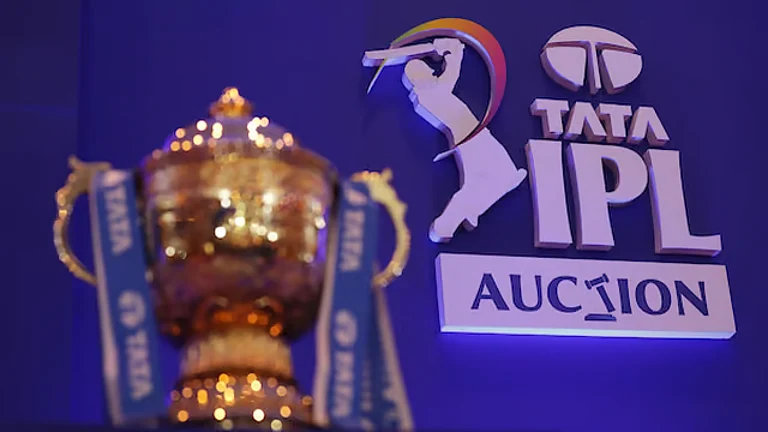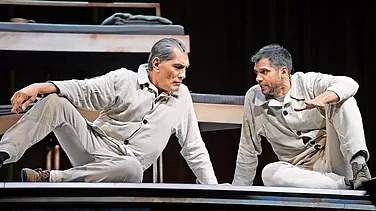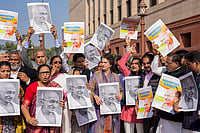THE curator at the Textile Museum in Washington wondered whether he should call the police. He was convinced that the light-eyed Indian sitting across his office table, a former World Bank economist, was a museum thief. He found it hard to believe that the $4,200 shimmering silk and gold fabric with a delicate luminous floral pattern, reminiscent of pietra dura, woven into its gold tasseled margins that the Indian was offering for the museum collection was not a stolen Mughal piece, but, as he claimed, one woven by him. Two years on, recounting the incident in his Ghaziabad workshop, Rahul Jain, 33, the economist-turned-weaver, laughs heartily: "I suppose he was surprised".
But then the story of Jain's romance with and revival of a 1,600-year-old, almost extinct, Central Asian weaving tradition of creating exquisite court vestments for Mughal emperors is nothing if not surprising. How did this banker turn into a master weaver whose 36-inch wide, 2.5-metre long silk and gold stoles, now priced at Rs 70,000 to Rs 90,000, are rated by textile experts a la Martand Singh as being far superior to any surviving examples of Mughal fabric in the world today? A wonder weaver whose pieces have found their way into prestigious places like the Paris-based AEDTA (The Association For The Study of Asian Textiles), the Textile Museum at Washington as well as the private collections of Indophile Krishna Riboud and businesswoman Lekha Poddar. A craftsman for whose contemporary heirlooms there is a queue of cognoscenti buyers, including royalty and diplomatic-spouses, with whose demands he finds difficult to cope since each piece takes four months to weave.
That "how" question has a one word answer: Chance. That alone led him to a weaver's workshop during his Washington sojourn. What began as a hobby became an obsession with the medium that took him to an advanced course at the Philadelphia College of Textiles and study tours of textile collections in Iranian and Indian museums. Says he: "I discovered the highest level of excellence in this art was attained during the Mughal period". What he also discovered was historical continuum. "The same draw loom from Central Asia had been in use for the last 1,600 years. In Varanasi, for instance. However, the loom had been simplified, complex weaves had fallen into disuse, the quality of craftsmanship had deteriorated. Lack of patronage, the appropriation of elitist court fabrics by the masses, colonialism, the arrival of the powerloom, contributed to the coarsening and extinction of a rich tradition," explains Jain.
Upon his return to India in 1993, he decided to salvage and revive that tradition. Step one was identifying constituents of the Mughal silk fabrics he wanted to revive. "For the weft, Mughal weavers used 'twist-less' silk which is nearly extinct in India today. Without that it is impossible to get the sharpness, that 'painted in' quality characteristic of the woven floral motifs of that period. It requires tremendous skill to weave with twist less yarn since unlike twisted yarn, there is nothing to hold it together. Thus it tends to snag and sway." Procuring that yarn, which had to be specially manufactured in Varanasi, in the minuscule quantities he required was tough. Step two was hunting for 98 per cent pure zari (silver thread plated with gold) which again had to be specially manufactured—the zari used these days has only 60 per cent to 80 per cent purity content. Step three involved introducing the original second warp system into the loom. "One is for the body fabric, the other for the pattern," explains Jain. After setting up two draw-looms at his family house in Ghaziabad, he graduated to step four: importing two traditional weavers from Ghazipur to train his men and operate the looms. "They threatened to leave every three days as they were used to weaving 5.5-metre sarees in four weeks. Here, weaving three inches took four days. A whole stole took four months," recalls Jain. When the first two 2.25-metre-long stoles, signed by the weavers in the best tradition of medieval craftsmanship, rolled out, steam pressed to "set the pattern" and finally calendered and readied, there was reason for jubilation. That exultation stemmed from the realisation that
"we had surpassed known examples of Mughal fabrics in terms of craftsmanship". Jain offers a carpet analogy to substantiate his claim: "The oldest surviving Mughalpashmina carpets have 2,500 knots per square inch. In our pieces, we've done the equivalent of 14,000 knots per square inch". Not jubilation alone. Three years and 10 collector's pieces later, there's reason for satisfaction too. A whole tradition has been rescued from oblivion, the workshop that began with just two weavers has seven now, economies of scale have enabled him to downscale prices, produce faster. Jain's best reward? A letter from the Washington Textile Museum complimenting him on producing " such a stunning textile piece at the end of the 20th century". Few would dispute that statement.


























